Deforestation Facts and Statistics 2023 [Global Data]
09/14/2023
![Deforestation Facts and Statistics 2023 [Global Data]](https://cdn11.bigcommerce.com/s-dnybxc6/images/stencil/750x500/uploaded_images/deforestation-facts-and-statistics.jpg?t=1623044898)
Saving the World’s Forests: Deforestation Facts & Statistics in 2023
Deforestation has always been associated predominantly with paper production, and, by extension, printing. We cut down trees to make paper, right?
Yes... and no.
While logging may have its roots in the production of paper goods, it has become a relatively small percentage of the deforestation equation.
According to a 2016 report by the Union of Concerned Scientists, paper and wood products account for approximately 10% of total deforestation.
The other 90% of deforestation comes from:
- cattle ranchers
- soybean farmers
- and palm oil plantations
Below we will look at the current state of deforestation, what’s being done to stop the wholesale destruction of virgin forests, and how it relates to paper and printing.
Let's start with a snapshot of current deforestation facts and statistics.
Global Deforestation Statistics
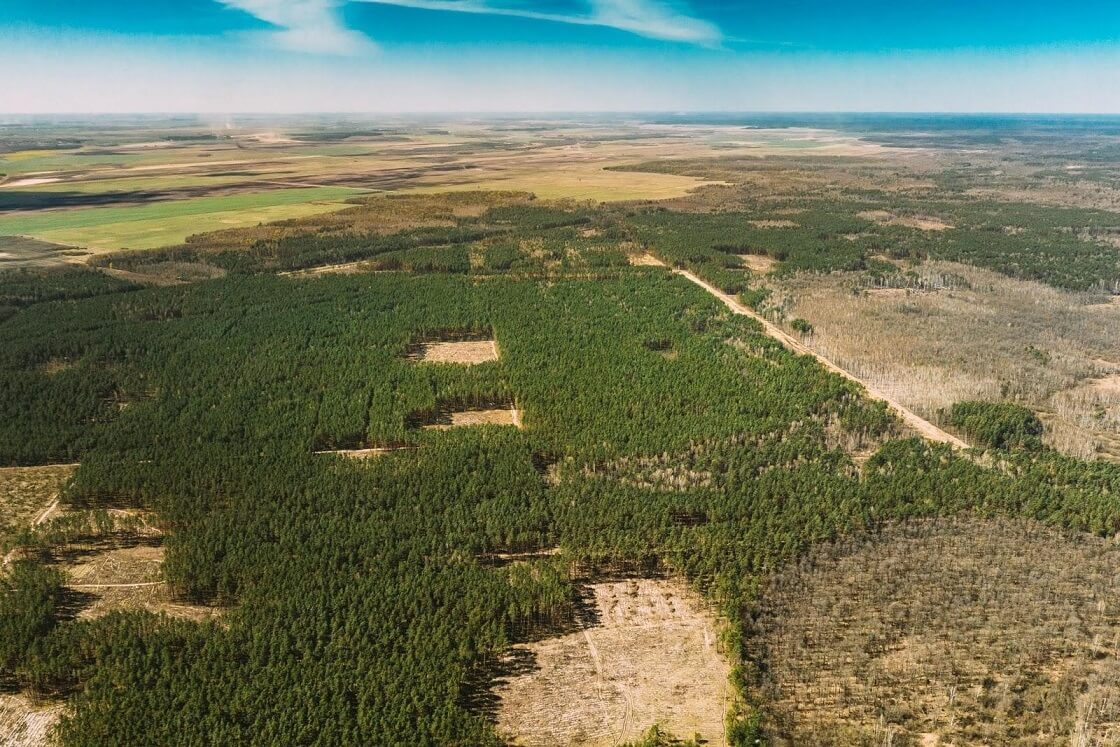
- 31% of the earth’s surface is covered by forests, approximately 4.06 billion hectares
- Only 18% of the world's forests are on land protected from deforestation.
- Over 420 million hectares of forest have been lost since 1990.
- Between 1990-2010 an average of 15.5 million hectares of forest were destroyed every year.
- Between 2010-2015 12 million hectares of forest were destroyed every year giving a 22.58% decline for 2010-2015 compared to 1990-2010.
- Between 2015-2020 10 million hectares of forest were destroyed every year giving a 35.48% decline for 2015-2020 compared to 1990-2010 and 16.67% decline compared to 2010-2015.
- 2,400 trees are cut down each minute.
- By the time you finish reading this sentence, another three hectares of forest have been cut down.
- 25.8 million hectares of forest were lost in 2020, double the amount of forested land lost in 2001.
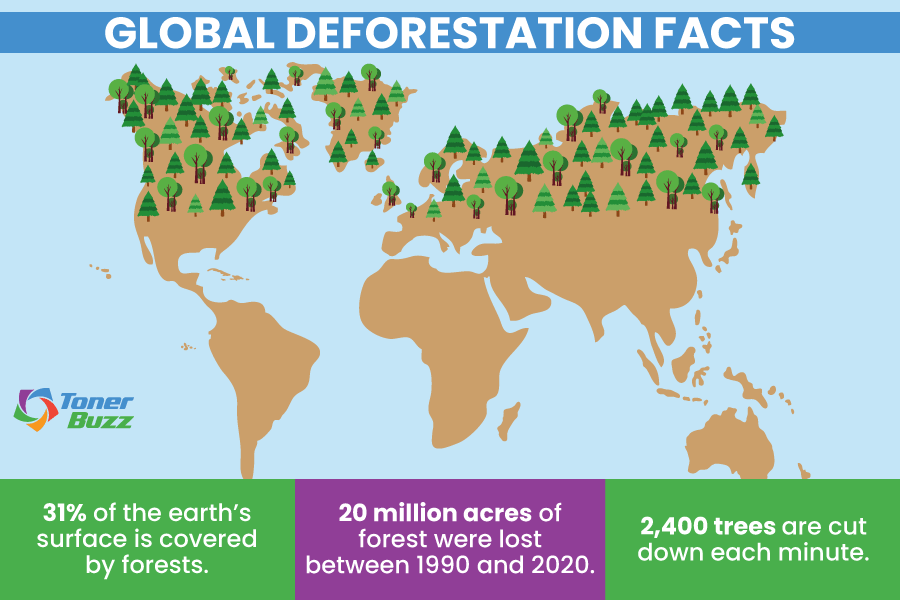
- Tropical deforestation contributes about 20% of annual global greenhouse gases (GHG) emissions.
- Prior to 2019, greenhouse gas emission from tropical forest degradation was seriously underestimated.
- Every second, a forest the size of a football field is cut down.
- 14,800 square miles of forest are lost every year. This is roughly the same size as Switzerland.
- In 2019, approximately 9 million acres of rainforests were destroyed.
- Deforestation causes approximately $2 trillion to $4.5 trillion in lost biodiversity each year.
- 4.2% of the world’s tree cover loss was between 1990 and 2020.
- By 2030, there may be only 10% of the world’s rainforests left.
- Agriculture is responsible for approximately 80% of tropical forest loss.
- 12 million hectares of tropical tree cover was lost in 2020.
- In 2022, the tropics experienced a 10% increase in primary rainforest loss compared to the previous year, as reported by the University of Maryland data accessible through WRI's Global Forest Watch.
- The loss of tropical primary forests in 2022 amounted to 4.1 million hectares, which is equivalent to the clearance of 11 soccer fields' worth of forest every minute.
Worldwide Tropical Primary Forest Loss (2002-2022)
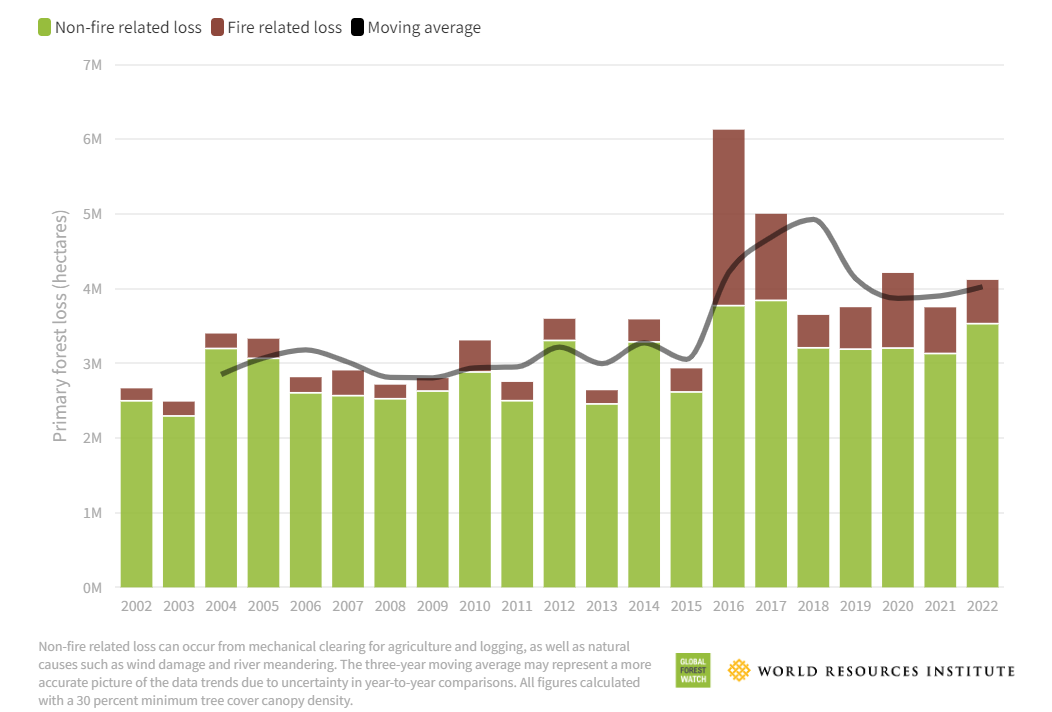
- This big loss of forests made 2.7 gigatonnes (Gt) of carbon dioxide, which is about the same as how much pollution India makes from burning fuels in a year.
- Ghana saw the most significant percentage increase, a staggering 71%, in primary forest loss recently. In 2022, the country lost 18,000 hectares.
- 31% of modern diseases are a result of deforestation.
- 137 different species of plants, animals, and birds are lost every single day due to global forest loss.
- Approximately 1,400 tree species are currently listed as critically endangered.
- 90 percent of people who live in extreme poverty depend on forests for their survival.
- More than 86 million green jobs are provided by forested regions.
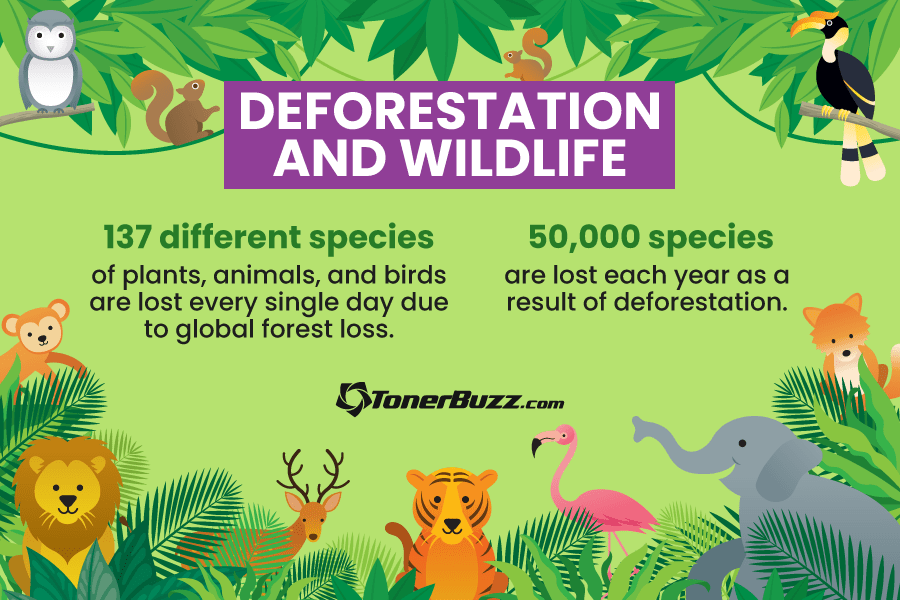
- 40 percent of the tropical deforestation that occurred between 2000 and 2010 is a result of commercial agriculture like cattle ranching and oil palm plantations.
- Brazil increased its greenhouse gas emissions by 9% in 2021, despite being in an economic recession.
- At our current rate, all rainforests will be gone in 77 years.
- The Amazon Rainforest now emits more carbon dioxide than it absorbs.
- 50,000 species are lost each year as a result of deforestation.
- 25% of Western drugs and pharmaceuticals come from rainforest ingredients.
- 25% of all cancer fighting drugs come from the rainforest.
- 75% of tropical rainforests have lost the ability to properly recover from wildfires and drought.
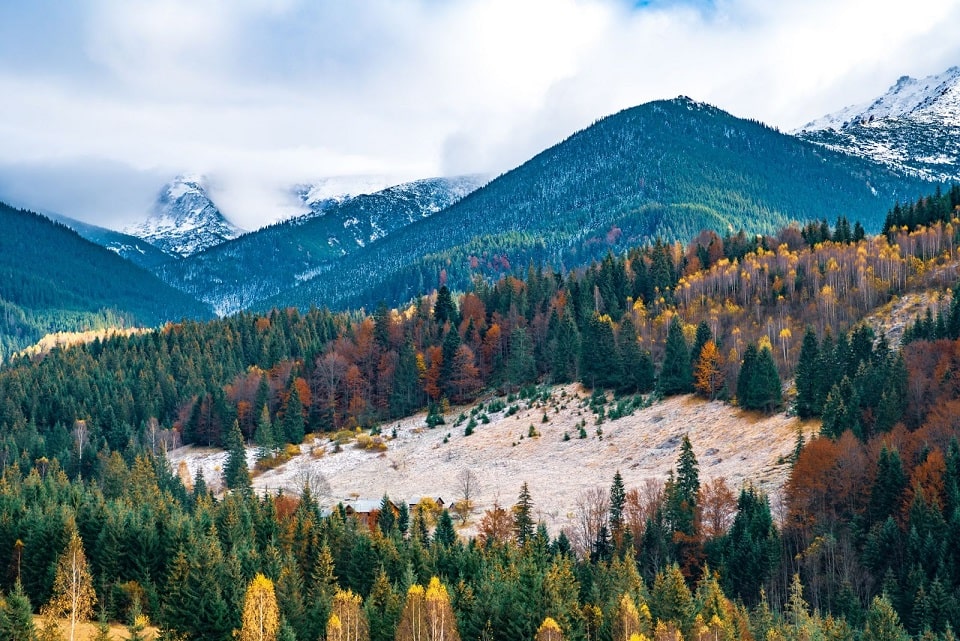
Lost of the world’s forests in the Carpathian Mountains in Europe.
⚡ Got a moment? Help us improve your printing experience!
Take our quick survey and share your printing experience with us:
➡️ Take the Survey
Your participation is greatly appreciated and makes a real difference!
Deforestation Statistics In The United States
- US cities lose 36 million trees annually.
- Since the 1600s, the US has destroyed 75% of its virgin forests.
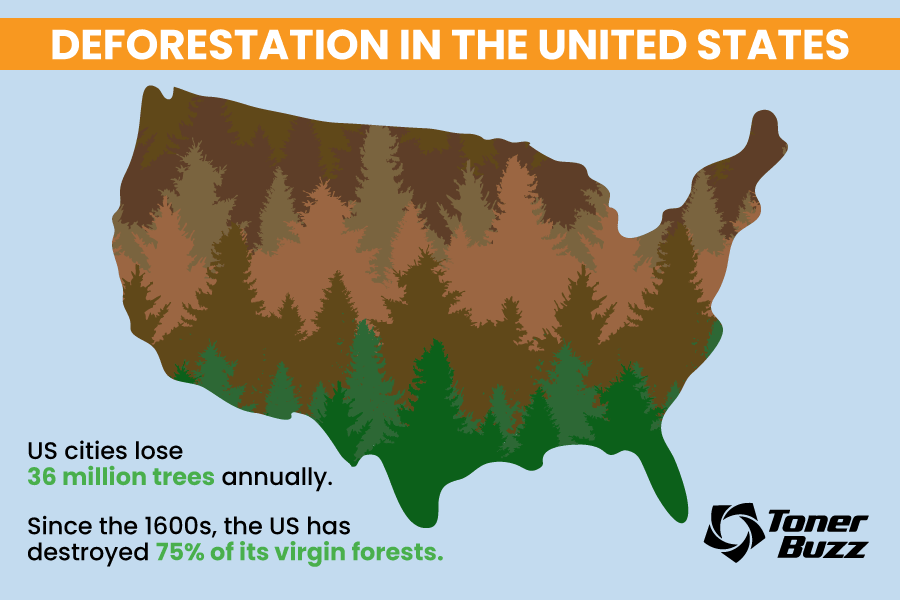
- The US lost 973,000 square miles of forest between 2001 to 2019.
- Between September 6th and September 13th, 2023, the United States had 91,852 deforestation alerts.
- These alerts spanned a total area of 988 hectares, with 2.8% classified as high-confidence alerts identified by a single system.
- Over two decades, from 2002 to 2022, the United States lost 1.40 million hectares of humid primary forest, which accounts for less than 0.1% of its total tree cover loss during that period.
- In 2022 alone, the United States saw the loss of 1.86 million hectares of natural forest, equivalent to emitting a staggering 663 million metric tons of CO₂.
- Looking at the broader picture, from 2001 to 2022, the United States witnessed a significant reduction of 46.5 million hectares in tree cover. This is a substantial 17% decrease in tree cover since 2000 and resulted in emissions of 18.0 gigatons of CO₂ equivalents.
Tree Cover Lost in the US From 2001 to 2022
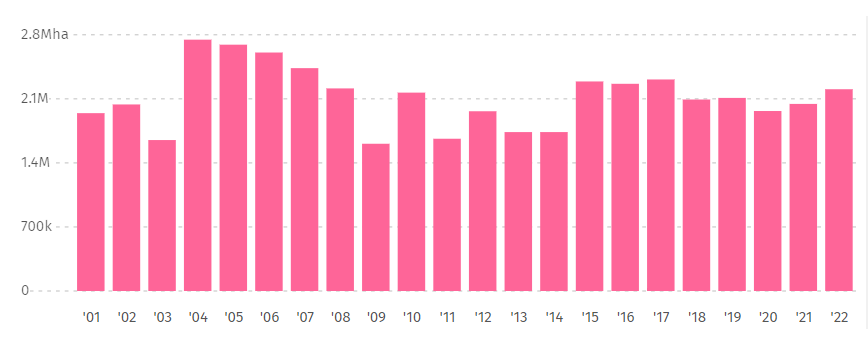
- Within this total tree cover loss, 7.2% occurred in areas where the main driver was deforestation.
- Notably, specific regions played a significant role. The top 8 regions in the United States were responsible for more than half (53%) of all tree cover loss between 2001 and 2022.
- Alaska, in particular, stood out with the highest tree cover loss at 6.22 million hectares, compared to an average of 911,000 hectares in other regions.
- The other states with notable tree cover loss during this period were Georgia, Alabama, California and Mississippi.
- When examining the causes of tree cover loss, between 2001 and 2022, the United States lost 12.5 million hectares of tree cover due to fires and an additional 34.0 million hectares due to various other drivers.
- This situation intensified in 2022, which saw the highest tree cover loss from fires during this period, with 952,000 hectares lost.
- This fire-related loss accounted for a substantial 43% of all tree cover loss for that year.
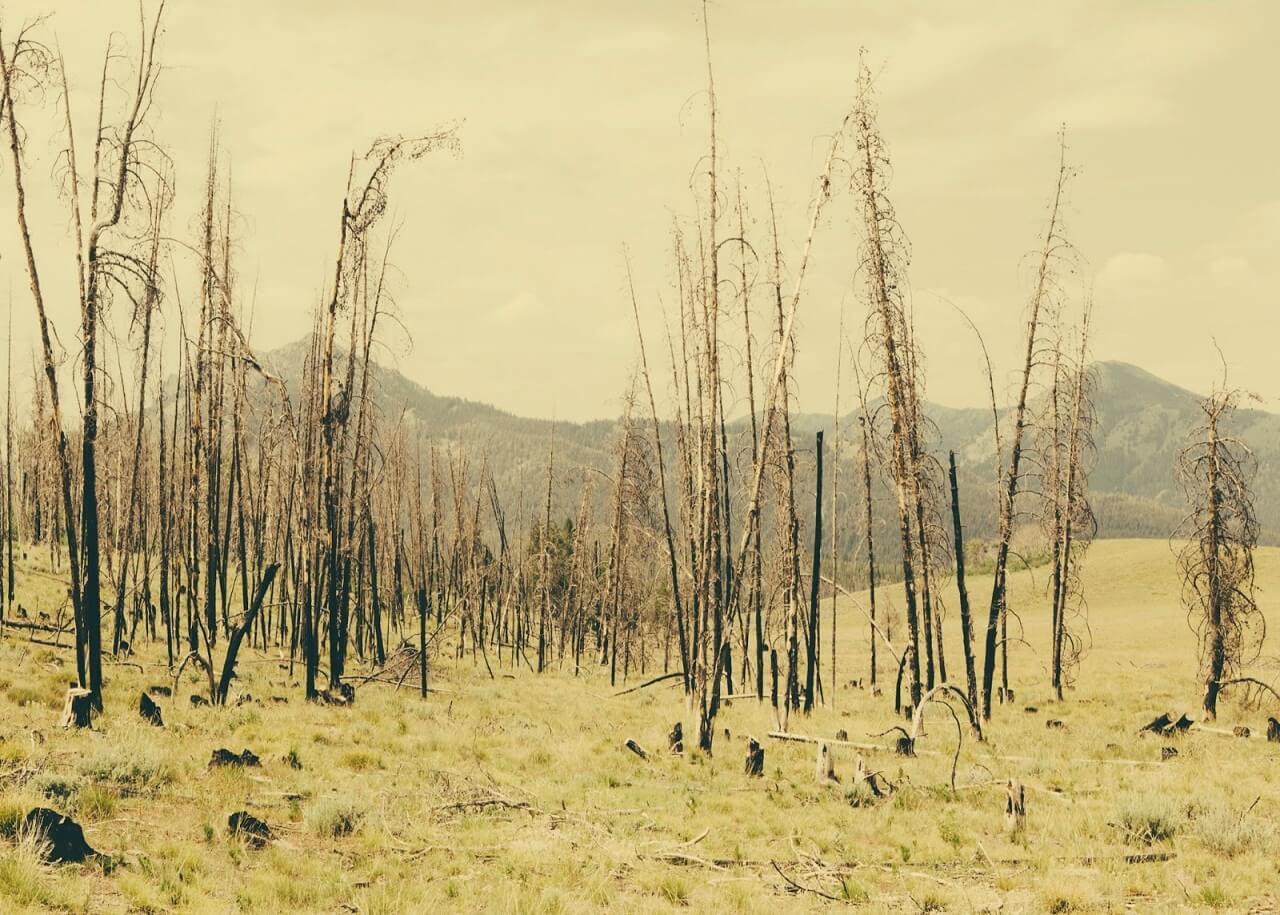
Fire damaged trees in Payette National Forest in Valley County, Indiana.
Tropical Deforestation In South America
- Tropical rainforests cover less than 7% of the earth’s surface, yet are home to over half of all the plant and animal species in the world.
- 17% of the Amazon rainforest has been cut down since 1970.
- 54% of global primary forest loss occurred in Latin America.
- Brazil lost approximately 218,000 square miles of forest between 2001 and 2019.
- In 2022, Brazil remained the world leader in tropical primary forest loss, accounting for 43% of the global total.
- This resulted in the loss of 1.8 million hectares of forest, emitting 1.2 Gt of carbon dioxide, which is 2.5 times higher than Brazil's annual fossil fuel emissions.
- Amazonas state, home to over half of Brazil’s intact forests, has nearly doubled its rate of primary forest loss in just three years.
- In 2022, it lost 396 hectares of natural forest, equivalent to 302 Mt of CO₂ emissions.
- 50% to 90% of deforestation in the Amazon, Central Africa, and Southeast Asia is due to illegal logging.
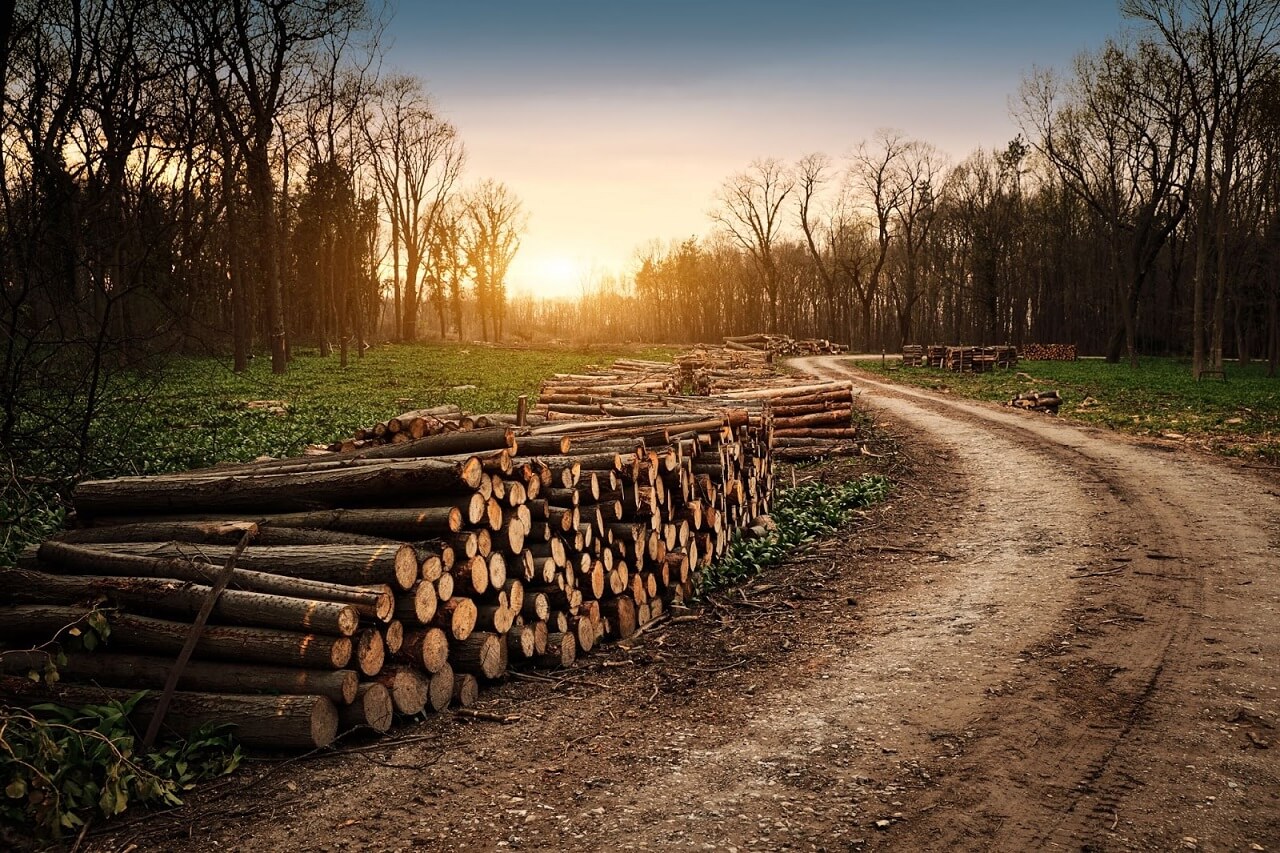
Illegal logging, along with palm oil plantations and cattle ranching, are a cause of deforestation in developing countries.
Tropical Deforestation In Haiti
- 99% of Haiti’s native forests have been cut down.
- Fewer than 100,000 acres of forest remain in Haiti.
- Haiti’s rainforest may be lost in the next 20 years.
Tropical Deforestation In Indonesia
- In 2022, Indonesia lost 230,000 hectares of primary forest.
- In the same year, Indonesia achieved a remarkable 64% reduction in primary forest loss, surpassing any other country in recent years.
- Between 2001 and 2022, Indonesia experienced tree cover losses amounting to 2.87 million hectares from fires and an additional 26.6 million hectares from various other causes.
- Nearly 200,000 square miles of Indonesian forest were cut down in 2018.
- 15 million acres of Indonesian boreal forest was lost between 2000 and 2012, the highest rate of any country.
- The Indonesian orangutan population is nearing extinction due to palm oil deforestation.
- 88% of rainforests in South Asia have been destroyed.
- Indonesia has reduced deforestation rates every year since 2016.

Forest cover is burned to make way for farms and factories.
What Is Deforestation?
Deforestation, also called forest degradation, is the cutting down of trees and forests. With 31% of the world covered with trees, deforestation is a threat to ecosystems around the globe:
Causes of Deforestation
Deforestation increased 12% globally in 2020, according to the World Resources Institute. Even as the rest of the world pulled back during the global COVID-19 pandemic — this study shows that the world economy shrank by 3.5% in 2020 — the destruction of environmentally sensitive tropical rainforests was on the rise.
More forest cover and forest resources were lost last year than in the entire preceding decade.
Why Do People Chop Down Primary Forest?
In pioneer days, American settlers chopped down trees to build homes and create grass pastures for livestock and agriculture. This is known as subsistence agriculture — clearing just enough forest to grow the food you need to survive.
This practice continues to this day, to the point where the United States has destroyed 75% of its virgin forests since 1600, according to Vicki Wright at Love To Know.
Housing and agriculture still drive deforestation in many parts of the world. Unfortunately, forest loss today happens in the world’s most environmentally sensitive areas in developing countries, like the Amazon rainforests, the Congo Basin, and the equatorial jungles of Indonesia.
Four Main Causes of Deforestation
- Forests cleared to build factories, businesses, or homes.
- Forests cleared for farmland. (This includes farming-related industries, like paper mills and sugar refineries).
- Forests cleared to create pastures for livestock.
- Forests burned by wildfires.
Deforestation and forest degradation can be accomplished by a handful of local workers working with hand tools but large-scale global forest cover loss is done with heavy machinery.
While you’d think paper production would be a primary cause of deforestation, it is surprisingly not.
Most paper products, from the sheets in your printer to the cardboard cup holding your coffee, are manufactured from recycled paper and/or from sustainable tree plantations.
Government regulations and inter-industry policies caused paper manufacturers to adopt more sustainable practices and environmentally responsible practices decades ago.
Wildfires can be another major cause of deforestation and forest degradation.
Sometimes the easiest way for an agriculture organization to clear land for cattle ranching, soy crops, or the palm oil industry is by burning. But these fires frequently get out of control and can consume hundreds of acres in temperate regions.
Forest loss data suggests burning a forest area to create agricultural land often results in total tree cover loss as well as land degradation.
Deforestation affects greenhouse gases. Conservation.org notes tropical forests store tons of carbon biomass, and estimates 11% of the total carbon dioxide emissions responsible for global warming come from burning forests.
Often this starts as a controlled fire to clear agricultural land only to become an out-of-control threat to human health.
Rising global deforestation rates suggest a global crisis when it comes to net forest loss.
According to Conserve Energy Future, illegal deforestation is a significant problem, with many countries in the European Union guilty of importing wood from illegal logging.
Organizations like Global Forest Watch and the World Wildlife Fund are stepping up efforts to protect primary forests but enforcement of protected areas and conservation areas of the forest sector must take place at the local level.
The Effects of Deforestation
Deforestation has been linked to climate change and global warming in two ways.
First, trees absorb carbon dioxide and emit oxygen, leading to clean, breathable air. Our global carbon emissions continue to rise, yet there is less forest cover and forested land to help maintain the ecological balance.
Another factor that must be considered when studying deforestation is albedo.
Albedo measures the reflectiveness of a surface.
Dark colors — like the green tree cover — will absorb the sun’s rays, while light-colored areas — like land left after forest loss — reflect solar radiation into the atmosphere.
This lack of tree cover leads to overall global warming and climate change.
Deforestation is also to blame for animal extinction and a decrease in global biodiversity. Plants and animals cannot survive without the forested areas they call home.
According to CNN, each year over 1,000 plants and animal species go extinct due to deforestation and subsequent habitat loss.
The United Nations, as well as experts at the World Wildlife Fund and Global Forest Watch, found that one million animals are in danger of extinction as a result of how much deforestation has occurred.
Here, Sir Richard Attenborough stresses the urgency of the extinction crisis brought on by global tree cover loss and damage to forest ecosystems...
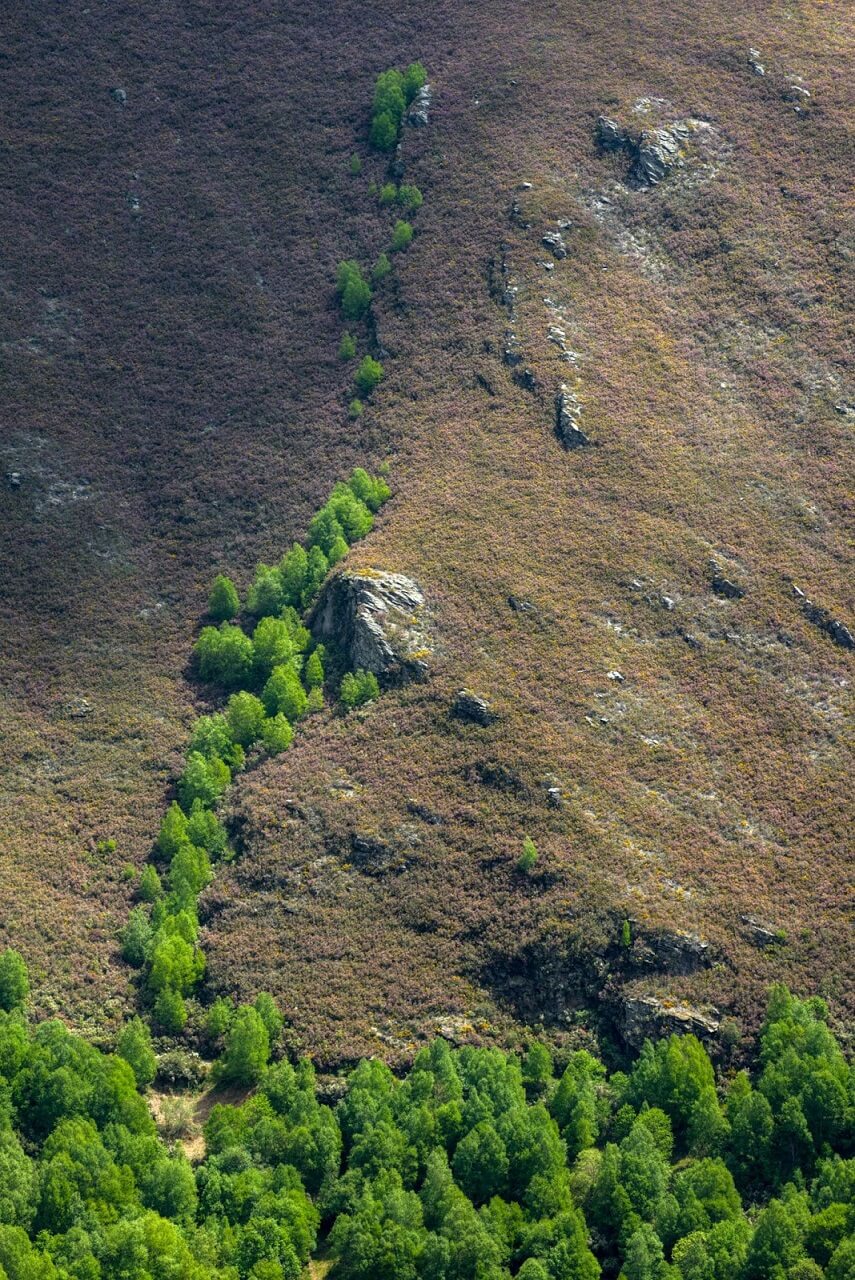
Primary forest loss in the Courel Mountains in Spain.
Deforestation and the Paper Industry
According to research done by the New York Declaration on Forests, approximately half of the forests used for wooden paper production are sustainably certified for production. The paper industry has to adopt more sustainable forest management standards.
Still, half the paper industry has adopted “green” practices, including sustainable forestry.
Certified sustainable forests are managed with an eye toward conservation. Essentially, three new trees are planted on tree plantations for every tree that is cut down.
This makes the paper industry one of the most responsible industries if you compare deforestation statistics.
By contrast, barely 2% of global soybean production is certified sustainable, according to the NYDF. An oil palm plantation can wipe out acres of forested land.
Three-quarters of the world’s certified sustainable forests and tree plantations are located in North America and Europe. But tropical forest loss still poses a grave danger in Indonesia, Thailand, and Malaysia which do not have any sustainable forest programs.
Greenpeace targeted Asia Pulp and Paper for taking advantage of this lack of regulation.
In recent years, Asia Paper and Pulp pledged to reduce deforestation, but the company’s main competitors have not.
In addition, Greenpeace reports nearly 80% of logging in Indonesia is done illegally.
Information from AlChe, “The Global Home of Engineers” suggests more needs to be done by the paper industry to combat global forest loss.
The Value of Boreal Forests
Boreal forests also known as the taiga, is a large northern forest made up of coniferous trees like pines and spruce.
Boreal forest in North America covers most of Canada and Alaska and parts of the Pacific northwestern United States.
This same forest covers much of Sweden, Finland, and northern Russia, as well as the northern zones of Kazakhstan, Mongolia, and Japan.
Boreal forest refers to the tree-covered area while taiga refers to the barren northern regions beyond the treeline and tundra.
The Necessity of Tropical Forests
Tropical forests, like the Amazon basin and the Atlantic Forest, are often referred to as “the lungs of the world.” A significant portion of the world’s oxygen is produced in the Amazon rainforest. (But not 20%, which is an often-misquoted statistic.)
One of the amazing things about the Amazon rainforest is that it generates half its own rainfall. Moisture from tree leaves evaporates into the clouds before falling back down on the forest, keeping the environment perpetually humid.
However, environmental degradation destabilizes the Amazonian water cycle, causing periods of drought followed by severe flooding.
Since the 1970s, approximately 17% of the Amazon’s forested areas have been destroyed.
Scientists fear that if deforestation rates reach between 20-25% the Amazon will be unable to sustain itself, leading to an entire ecosystem collapse.
Deforestation Efforts in the Amazon Rainforest
We’ve known since the 1980s that an area roughly the size of Belgium has been carved out of the Amazon rainforest. We’ve witnessed entire plants and animal species wiped out.
The situation in the Amazon remained dire throughout the 1990s. But in the 2000s increased regulations and strict enforcement helped turn the tide of deforestation and forest degradation in the Amazon. Tree canopy cover increased for the first time in decades.
But changes in political regimes in Brazil shifted the focus from forest ecology back to agriculture and industry.
Deforestation rates in the Amazon rainforest are approaching new highs in recent years. Massive forest fires in 2019 also set back deforestation gains made in the Amazon, as hundreds of square miles of forests were lost.
In addition, illegal logging continues to whittle away at the Amazon’s tropical forests.
Deforestation and Climate Change
The effects of deforestation on the environment are significant. According to the reforestation group One Tree Planted, a single tree can absorb up to 48 pounds of carbon dioxide each year, making it the most effective carbon filtration system on earth. We need trees to clean our air!
But deforestation is a double-edge sword. When a tree is cut down, we not only lose its carbon filtering potential, we also release all of the carbon stored in that tree.
Trees store carbon in their branches, leaves, and soil. When a tree is cut down, it releases that carbon back in the atmosphere, contributing to the build-up of atmospheric gases.
As a result deforestation is responsible for 13% of all global carbon emissions (Rainforest Alliance).
To add insult to injury, the farms that replace felled forests exacerbate climate change. Cattle ranches (and the livestock they contain) produce harmful methane, while crop farming releases nitrous oxide into the environment through fertilizers.
The Future of Deforestation
According to the United Nations Food and Agriculture Organization, deforestation has decreased from 62,000 square miles to 38,600 square miles per year. This has resulted in tree cover gain improvement for the world’s forests.
But these rates are still alarming.
The FAO notes that in addition to impacting climate change, global warming, and animal extinction, deforestation can also lead to accelerated land erosion and chronic flooding.
Bright Spots in the Deforestation Battle
But there are bright spots:
- Brazil reduced Amazon deforestation rates by two-thirds between 2004 and 2012.
- In addition, Indonesia reduced its deforestation rates by 40%.
- Reforestation trends studied by National Geographic suggest global forestation will increase by 10%—an area the size of India—by 2050.
While world governments are taking steps in the right direction to ease the impact of deforestation, set up protected areas, and facilitate environmental cleanup efforts, more must be done to save our earth’s greatest natural resource.
Ways To Combat Illegal Deforestation
Governments and law enforcement must be responsible for apprehending and punishing illegal loggers and forcing businesses to adhere to environmentally responsible guidelines. But individuals like you and me can do our part to help reverse the effects of deforestation as well, no matter where in the world you live.
Sometimes deforestation can be combated on a regional level. Even small communities can do their part. For example, Conservation says trees in sub-Saharan Africa are being cut down 200 times faster than they can grow, causing timber shortages and loss of wildlife habitat. Most of this wood is being used for fuel.
A better choice would be to cultivate bamboo farms in sub-Saharan Africa. Bamboo is easy to grow and makes excellent fuelwood. Bamboo grows far faster than trees, which would lessen the need for deforestation in the region.
In addition, bamboo also burns cleaner than wood, releasing fewer pollutants into the air.
How Can You Help Fight the Effects of Deforestation in Daily Life?
For starters, stop using plastic bags. Stick with a reusable canvas bag instead.
Also, we like supporting environmentally responsible companies that are committed to acting when deforestation occurs by reducing their carbon footprint.
Companies like Nike, Starbucks, and Disney frequently top the list of the most eco-friendly businesses.
➜ RELATED: Greenpeace Guide to Greener Electronics: How Green Are the World’s Top Electronics Manufacturers?
Avoid products that use palm oil. Many of these products come from Southeast Asia where tropical rainforests are cut down to make room for palm oil plantations.
Oil palm is in almost everything, but try to avoid it by choosing products where the ingredients are clearly labeled. If it says “palm” anything, skip it. There’s probably oil palm in there.
Most prepackaged snack foods contain palm oil. If whatever you’re eating contains more than 40% saturated fat, it’s likely packed with palm oil.
Donate to responsible charities. Eden Reforestation Projects hires local residents to plant trees in countries like Madagascar, Nepal, Haiti, Indonesia, Mozambique, Kenya, and South America. At a rate of $.10 per tree, these programs give impoverished residents a source of income, as well to help forests recover globally.
Become carbon neutral. Reducing your carbon footprint is a great way to reduce greenhouse gases and curbs the effects of global deforestation.
In addition, you can eat less beef. If demand for beef dropped, farmers might stop burning down forests to make room for cow pastures.
The United Nations Combats Tree Cover Loss
The United Nations has set up a program to protect forests called Reducing Emissions from Deforestation and Forest Degradation.
So far, more than 44 countries have drawn $117 million from the fund to combat deforestation. This includes Brazil, which was able to decrease deforestation forests by 40% since 2008.
In April 2018, the Supreme Court of Colombia demanded a plan to combat Amazon deforestation be created. This landmark ruling gives the Amazon river the same rights as a human individual and adds additional protection to the environmentally sensitive tropical forest.
There are some bright spots in recent decades. A 2018 study on forest loss data showed forest cover has increased over the last 35 years. This is due in part to both China and Africa investing in replanting programs.
There have also been trees planted on abandoned farms in Russia and the United States.
Slowly but surely, we’re fighting back wherever deforestation occurs.
Ironically, one byproduct of warmer temperatures is new tree growth in mountainous areas and tundras where they could never grow before. This has helped increase global tree canopy coverage over the last three decades, reducing the effects of forest loss globally.
What Is Reforestation?
Forests have an amazing way of bouncing back and regenerating themselves, but they need our help.
Reforestation is the planting of new trees in areas that have lost tree cover due to logging, agriculture, or wildfires.
The benefits of reforestation are many. Not only do these trees help filter air pollution they also filter groundwater ground and help neutralize flooding. Forests rejuvenate degenerated soil, as well as provide sources of food and jobs.
Planting Trees Around The World
Groups like One Tree Planted are spearheading reforestation projects around the globe. Projects are chosen according to the communities they would best serve. Planting costs and seasonal conditions are also considered.
Once a reforestation site is selected, local nurseries are asked to begin growing seedlings of indigenous trees. Team of volunteers and professional forestry agents do the work of planting and maintaining the seedlings.
We’d love to see reforestation made mandatory for business owners. In Finland, for example, laws require industries that cut down trees to repopulate them.
In 2020, the World Economic Forum announced the launch of its One Trillion Tree Campaign to help reforest several million hectares of forest across the globe, including regions in South America, Indonesia, Russia, Canada, and the United States
VIDEO: Reforestation Explained
Check out the video below to learn more about reforestation:
What Else You Can Do To Help Combat Deforestation
Consider visiting one of the sites below to learn more about efforts to combat deforestation and what you can do to help.
- Eni.com -- An Italian energy company with a goal of planting 73 million trees in the Amazon rainforest.
- Tree Nation -- a non-profit organization that works with people and business around the the world to help plant trees and reduce carbon dioxide emissions.
- One Tree Planted -- a non-profit dedicated to reforestation projects around the world.
- Reforest Action -- this French conservation group is committed to preserving, restoring and creating global forests, and has so far planted more than two million trees in 35 different countries.
Further Reading:
- Paper Books vs eBooks
- Book and Reading Statistics
- How To Reduce Paper, Ink, and Toner Waste in Marketing
https://www.aiche.org/chenected/2016/10/sustainab...
https://www.bloomberg.com/news/articles/2019-04-2...
https://www.conservation.org/stories/11-deforesta...
http://www.conserve-energy-future.com/various-def...
https://edition.cnn.com/2020/12/01/americas/defor...
https://www.edf.org/sites/default/files/10333_Mea...
https://www.edenprojects.org/
https://www.eib.org/en/essays/on-water
https://www.everycrsreport.com/reports/R41992.htm...
https://www.fao.org/state-of-forests/en/
https://www.fao.org/forest-resources-assessment/2...
https://www.fao.org/3/ca9825en/CA9825EN.pdf
https://www.fao.org/documents/card/en/c/ca8985en
https://forestdeclaration.org/about
https://futurism.com/amazon-rainforest-deforestat...
https://www.globalforestwatch.org
https://www.greenpeace.org/usa/forests/issues/agr...
https://greenliving.lovetoknow.com/United_States_...
https://www.iucn.org/resources/issues-briefs/palm...
https://www.livescience.com/27692-deforestation.h...
https://www.mightyearth.org/2019/04/30/heres-what...
https://www.nationalgeographic.com/environment/ar...
https://www.ncbi.nlm.nih.gov/pmc/articles/PMC6366...
https://news.un.org/en/story/2020/07/1068761
https://onetreeplanted.org/blogs/stories/state-of...
https://phys.org/news/2018-10-animal-species-exti...
https://psmag.com/environment/haiti-is-set-to-los...
https://rain-tree.com/facts.htm
https://www.rainforest-alliance.org/insights/what...
https://research.wri.org/gfr/forest-pulse
https://storymaps.arcgis.com/stories/911c70f4813d...
https://www.theworldcounts.com/stories/deforestat...
https://www.theguardian.com/environment/2022/mar/...
https://www.theguardian.com/environment/2021/jul/...
https://www.theguardian.com/environment/2019/oct/...
https://www.theguardian.com/cities/2018/may/10/us...
https://www.thebalance.com/deforestations-economi...
https://thedailyblog.co.nz/2013/07/23/paper-cuts-...
https://www.ucsusa.org/resources/wood-products
https://www.un-redd.org/
https://www.vivideconomics.com/casestudy/greening...
https://www.washingtonpost.com/world/2021/11/02/b...
https://www.worldwildlife.org/threats/deforestatio...
https://www.wri.org/insights/2021-must-be-turning...
https://www.wri.org/insights/indonesia-reducing-d...
https://www.globalforestwatch.org/blog/data-and-re...




